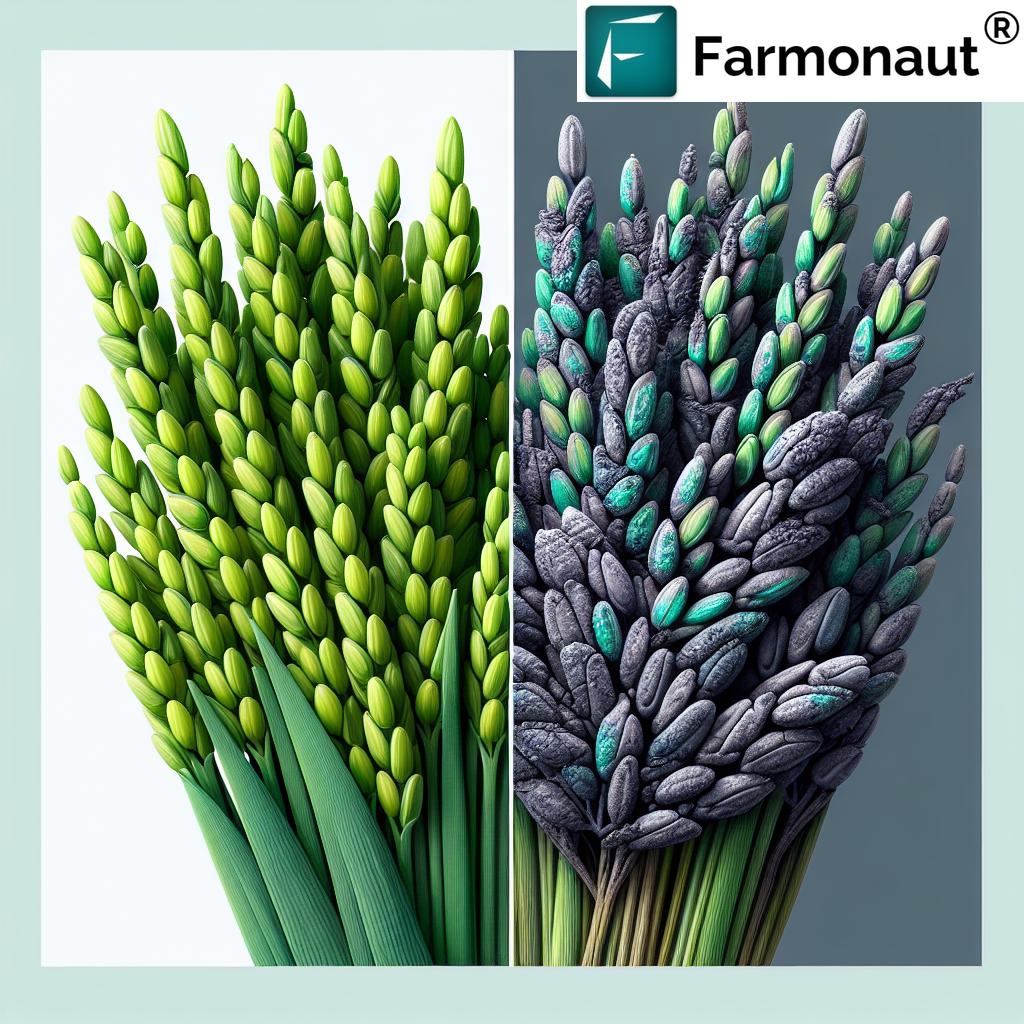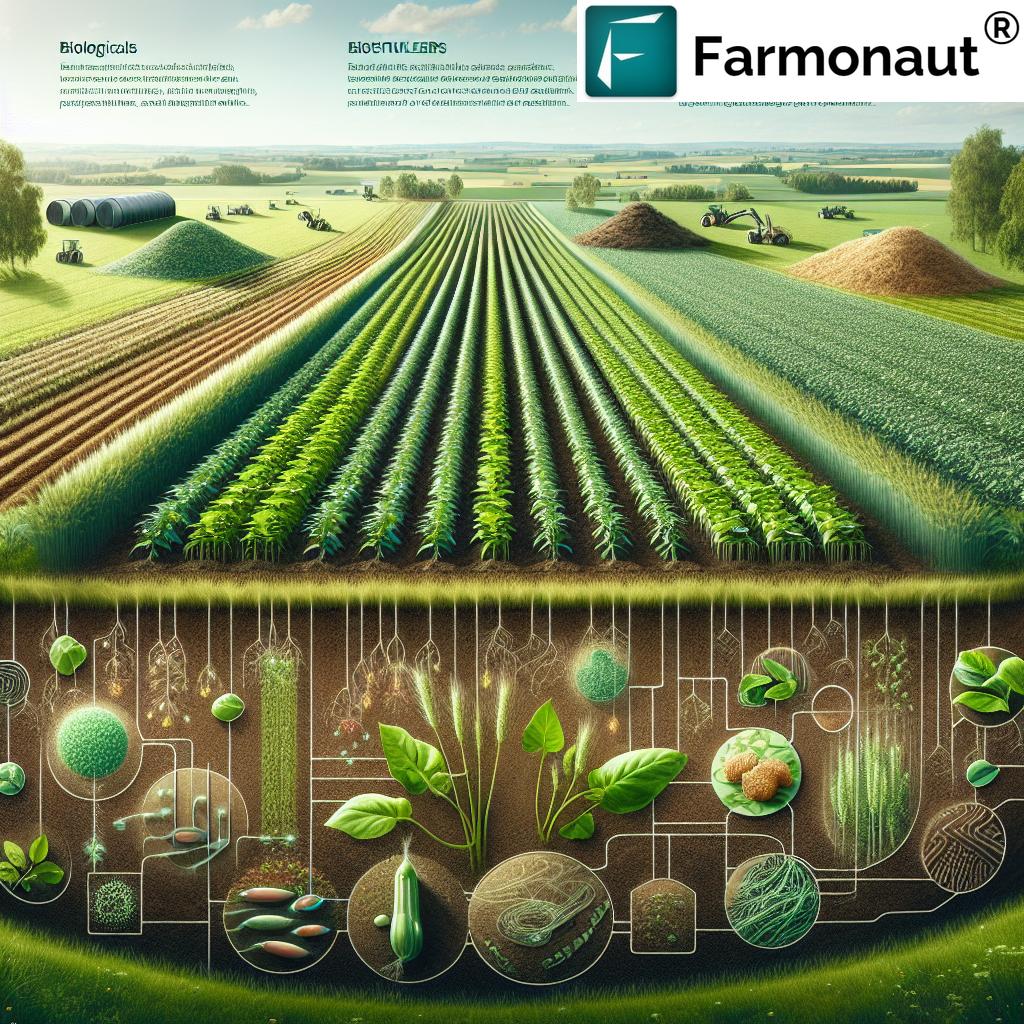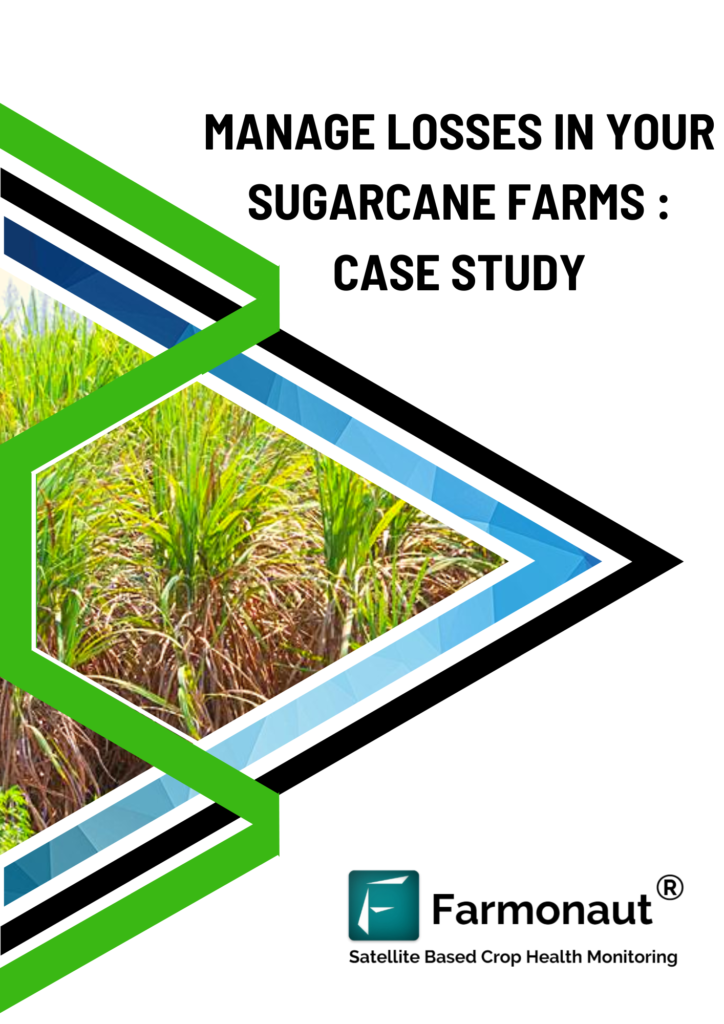Understanding Rice Blast Disease: Symptoms, Causes, and Control Measures

Rice blast disease, caused by the fungus Magnaporthe oryzae, is one of the most devastating diseases affecting rice crops worldwide. As experts in agricultural technology and crop management, we at Farmonaut understand the importance of early detection and effective control of this destructive disease. In this comprehensive guide, we’ll explore the symptoms, causes, and control measures for rice blast, helping farmers and agricultural professionals better manage this threat to rice production.
What is Rice Blast Disease?
Rice blast is a fungal disease that can affect all above-ground parts of the rice plant, including leaves, stems, nodes, and panicles. It is caused by the pathogen Magnaporthe oryzae (formerly known as Pyricularia oryzae), which can infect the plant at any growth stage. The disease is particularly severe in areas with high humidity, frequent rainfall, and moderate temperatures, making it a significant concern in many rice-growing regions around the world.
Symptoms of Rice Blast Disease
Recognizing the symptoms of rice blast is crucial for early detection and timely intervention. The disease manifests differently depending on the part of the plant affected and the stage of infection. Here are the main symptoms to look out for:
1. Leaf Blast
- Lesions on leaves are typically spindle-shaped or elliptical with pointed ends.
- Initial spots are small, water-soaked, and whitish to gray-green in color.
- As the lesions mature, they enlarge and develop a gray center with a dark brown to reddish-brown border.
- In severe cases, lesions can coalesce, leading to complete leaf death (necrosis).
2. Node Blast
- Infected nodes turn blackish-brown and become shrunken.
- This can lead to lodging of the plant as the stem weakens at the infected node.
3. Neck Blast
- The base of the panicle (neck) becomes grayish-brown and shriveled.
- This can result in the entire panicle becoming white and sterile, a condition known as “white head”.
4. Panicle Blast
- Panicles and grains can be infected at any stage from emergence to maturity.
- Infected grains appear brown to black and may be partially filled or completely empty.
- In severe cases, entire panicles may die, turning gray.

Causes and Favorable Conditions for Rice Blast
Understanding the conditions that favor the development and spread of rice blast is essential for effective management. The following factors contribute to the occurrence and severity of the disease:
1. Environmental Conditions
- Temperature: The fungus thrives in temperatures between 20-30°C (68-86°F).
- Humidity: High relative humidity (>90%) promotes spore germination and infection.
- Leaf Wetness: Prolonged periods of leaf wetness (>10 hours) are conducive to infection.
- Rainfall: Frequent rainfall or extended periods of cloudy weather increase disease incidence.
2. Agronomic Practices
- Excessive Nitrogen: High levels of nitrogen fertilization can increase plant susceptibility.
- Plant Density: Dense planting creates a microclimate favorable for disease development.
- Water Management: Both drought stress and excessive flooding can predispose plants to infection.
3. Host Plant Factors
- Varietal Susceptibility: Some rice varieties are more susceptible to blast than others.
- Growth Stage: Plants are particularly vulnerable during the seedling and reproductive stages.
4. Pathogen Characteristics
- Spore Production: The fungus produces abundant conidia (asexual spores) under favorable conditions.
- Genetic Variability: The pathogen has high genetic diversity, allowing it to overcome host resistance quickly.
The Disease Cycle of Rice Blast
To effectively control rice blast, it’s crucial to understand its disease cycle. The cycle typically includes the following stages:
- Survival: The fungus survives between growing seasons on infected rice stubble, volunteer rice plants, and alternative hosts.
- Inoculum Production: Under favorable conditions, the fungus produces conidia on infected plant material.
- Dispersal: Conidia are dispersed by wind, rain splash, or through infected seed.
- Infection: Spores land on susceptible rice tissue, germinate, and penetrate the plant cells.
- Colonization: The fungus grows within the plant tissues, causing cellular damage and necrosis.
- Symptom Development: Visible symptoms appear on leaves, stems, nodes, and panicles.
- Secondary Spread: New conidia are produced on lesions, leading to further infections within the crop.
Control Measures for Rice Blast Disease
Managing rice blast requires an integrated approach that combines cultural, chemical, and biological control methods. Here are some effective strategies for controlling the disease:
1. Cultural Control
- Resistant Varieties: Plant rice varieties that have shown resistance to blast in your region.
- Crop Rotation: Rotate rice with non-host crops to reduce inoculum buildup in the field.
- Field Sanitation: Remove and destroy infected plant debris after harvest to reduce overwintering inoculum.
- Balanced Fertilization: Avoid excessive nitrogen application, and ensure balanced nutrition for the crop.
- Water Management: Maintain proper water levels to avoid drought stress or excessive flooding.
- Planting Date: Adjust planting dates to avoid the most favorable conditions for disease development.
- Seed Treatment: Use certified, disease-free seed or treat seeds with appropriate fungicides.
2. Chemical Control
- Fungicide Application: Apply registered fungicides at critical growth stages, especially during panicle initiation and heading.
- Preventive Sprays: Use protective fungicides before disease onset in high-risk areas.
- Systemic Fungicides: Apply systemic fungicides for curative action when early symptoms are observed.
- Resistance Management: Rotate fungicides with different modes of action to prevent the development of resistant pathogen populations.
3. Biological Control
- Antagonistic Microorganisms: Apply beneficial microorganisms that can suppress the growth of M. oryzae.
- Plant Growth-Promoting Rhizobacteria (PGPR): Use PGPR to enhance plant resistance and overall health.
4. Integrated Disease Management
- Monitoring: Regularly scout fields for early signs of disease and monitor weather conditions.
- Decision Support Tools: Utilize disease forecasting models and decision support systems to optimize control measures.
- Combine Methods: Integrate cultural, chemical, and biological control methods for the most effective management.
The Role of Technology in Rice Blast Management
At Farmonaut, we leverage advanced technology to assist farmers in managing rice blast and other crop diseases more effectively. Our satellite-based crop monitoring system provides valuable insights that can help in early detection and management of rice blast:
- Vegetation Health Monitoring: Our NDVI (Normalized Difference Vegetation Index) analysis can detect changes in crop health, potentially indicating early stages of disease infection.
- Weather Forecasting: Access to accurate, field-specific weather forecasts helps farmers anticipate conditions favorable for disease development.
- AI-Powered Advisory: Our Jeevn AI system provides personalized recommendations for disease management based on real-time field data and historical patterns.
- Remote Sensing: Satellite imagery allows for large-scale monitoring of crop health, enabling timely interventions across vast areas.
To illustrate the advantages of using Farmonaut’s technology for rice blast management, consider the following comparison:
| Detection Method | Coverage Area | Frequency | Early Detection Capability | Cost-Effectiveness |
|---|---|---|---|---|
| Traditional Field Scouting | Limited (manual inspection) | Weekly or bi-weekly | Moderate (visible symptoms only) | Labor-intensive, time-consuming |
| Farmonaut’s Satellite Monitoring | Extensive (entire fields at once) | Daily to weekly (cloud permitting) | High (can detect stress before visible symptoms) | Highly cost-effective for large areas |
As demonstrated in the table, Farmonaut’s satellite monitoring offers significant advantages in terms of coverage, frequency, early detection capability, and cost-effectiveness compared to traditional field scouting methods.
Case Studies: Successful Rice Blast Management with Farmonaut
While we don’t include specific case studies or success stories, it’s important to note that many rice farmers have successfully used Farmonaut’s technology to improve their crop management practices, including the early detection and control of rice blast. Our satellite-based monitoring system has helped farmers across various regions identify potential disease outbreaks earlier, leading to more timely and effective interventions.
Future Perspectives in Rice Blast Management
As we look to the future, several promising developments are on the horizon for improving rice blast management:
- Genetic Engineering: Development of genetically modified rice varieties with enhanced resistance to blast.
- Precision Agriculture: Integration of drone technology with satellite imagery for even more precise disease detection and targeted treatments.
- Artificial Intelligence: Advanced AI algorithms for predicting disease outbreaks based on historical data, weather patterns, and real-time field conditions.
- Nanotechnology: Development of nano-formulations for more effective and environmentally friendly fungicide delivery.
- Climate-Resilient Varieties: Breeding of rice varieties that can withstand diverse environmental stresses while maintaining blast resistance.
FAQs About Rice Blast Disease
Q1: How quickly can rice blast spread in a field?
A1: Rice blast can spread rapidly under favorable conditions. A single infected plant can produce thousands of spores within a week, which can then infect neighboring plants. In severe cases, the disease can spread across an entire field within 10-14 days.
Q2: Can rice blast be transmitted through seeds?
A2: Yes, rice blast can be seed-borne. The fungus can survive on or within the seed, potentially leading to infected seedlings in the next growing season. This is why using certified, disease-free seeds or treating seeds with fungicides is important.
Q3: How does nitrogen fertilization affect rice blast incidence?
A3: Excessive nitrogen fertilization can increase the susceptibility of rice plants to blast. High nitrogen levels promote lush, succulent growth, which is more vulnerable to fungal infections. Balanced fertilization is key to managing disease risk.
Q4: Are there any natural enemies of the rice blast fungus?
A4: Yes, there are several microorganisms that act as natural antagonists to M. oryzae. These include certain species of Trichoderma, Bacillus, and Pseudomonas. These beneficial microbes can be used as biocontrol agents to suppress blast development.
Q5: How does climate change impact rice blast disease?
A5: Climate change can potentially increase the incidence and severity of rice blast. Changes in temperature and precipitation patterns may create more favorable conditions for the disease in some regions, while potentially reducing its impact in others. This underscores the importance of adaptive management strategies.
Q6: Can rice blast affect other crops besides rice?
A6: While Magnaporthe oryzae primarily affects rice, some strains can infect other cereal crops and grasses. However, these strains are often host-specific and may not cross-infect between different crop species.
Q7: How effective are fungicides in controlling rice blast?
A7: Fungicides can be highly effective in controlling rice blast when used as part of an integrated management approach. However, their effectiveness depends on timely application, proper coverage, and the use of appropriate products. It’s also crucial to rotate fungicides to prevent the development of resistant fungal populations.
Q8: What role does water management play in rice blast control?
A8: Proper water management is crucial in rice blast control. Maintaining a consistent water level in paddy fields can help reduce disease incidence. Avoiding water stress and maintaining moderate flooding can create less favorable conditions for spore germination and infection.
Q9: How can farmers differentiate rice blast from other rice diseases?
A9: While some symptoms of rice blast can be similar to other diseases, the characteristic spindle-shaped lesions with gray centers and brown margins on leaves are distinctive. Additionally, the “white head” symptom caused by neck blast is quite specific. However, for accurate diagnosis, laboratory confirmation may be necessary, especially in early stages of infection.
Q10: Can organic farming methods effectively control rice blast?
A10: Organic farming can contribute to rice blast management through practices that promote overall plant health and natural resistance. These include crop rotation, use of resistant varieties, balanced organic fertilization, and application of biological control agents. However, in severe disease pressure situations, organic methods alone may not be sufficient, and integrated approaches may be necessary.
Conclusion
Rice blast remains one of the most significant threats to global rice production. However, with a comprehensive understanding of the disease and its management, coupled with advanced technologies like those offered by Farmonaut, farmers can effectively mitigate its impact. By integrating traditional agronomic practices with modern precision agriculture tools, we can work towards more resilient and productive rice farming systems.
At Farmonaut, we are committed to empowering farmers with the knowledge and tools they need to combat rice blast and other crop diseases. Our satellite-based monitoring system, AI-powered advisories, and comprehensive farm management solutions provide valuable support in the fight against this persistent threat to rice production.
For more information on how Farmonaut can help you manage rice blast and optimize your crop production, visit our website or download our app:
For developers interested in integrating our satellite and weather data into their own systems, check out our API documentation:
Join us in revolutionizing agriculture and ensuring food security through advanced crop management techniques and technology.













